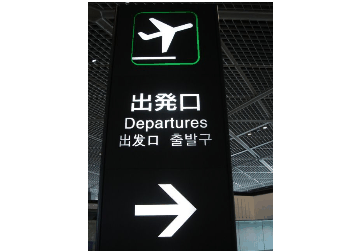
On Friday, the Australian Bureau of Statistics (ABS) released data on overseas short-term tourist arrivals and departures. Once again, it provided stark evidence that some of Australia’s domestic industries, in this case tourism and retail, are hurting badly from the high Australian dollar.
The below chart plots the monthly tourist arrivals and departures to/from Australia since 2000.
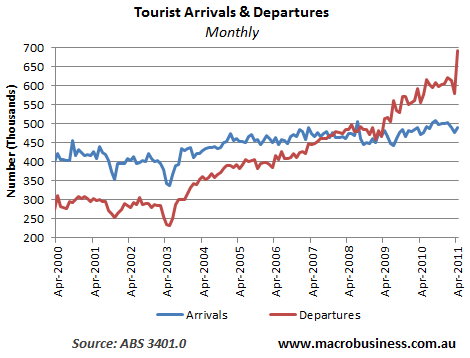
As you can see, the surging Australian dollar has prompted many Australians to holiday overseas. Although the number of departures overseas had already been growing steadily since 2003, departures popped in April 2011, increasing by almost 20% from the prior month and by 25% from the same time last year.
Meanwhile, tourist arrivals from overseas have remained relatively stable since the mid-2000s, discouraged by the high Australian dollar.
The annual data is equally stark. At the beginning of last decade, Australia received around 7 overseas visitors per year for every 5 Australians holidaying abroad. But now this ratio is no longer in Australia’s favour, with only around 4 overseas visitors holidaying in Australia in the year to April 2011 for every 5 Australians visiting abroad (see below chart).
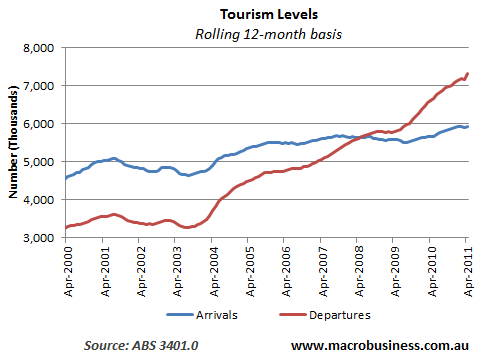
Australia’s favourite overseas holiday destination is South East Asia (particularly Indonesia and Thailand), which received nearly one-third of Australian departures in April 2011. This was followed by Oceania (21%), the Americas (12%), North West Europe (11%) and North East Asia (10%).
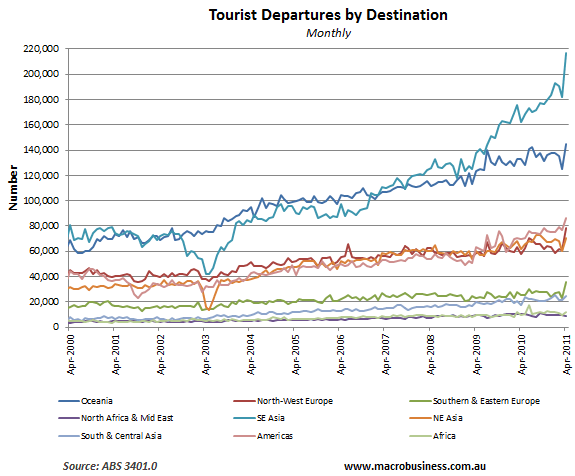
By contrast, the majority of foreign visitors to Australia are from Oceania, which accounted for 22% of arrivals in April 2011. This was followed by North Western Europeans (21%), North East Asians (20%) and South East Asians (16%).
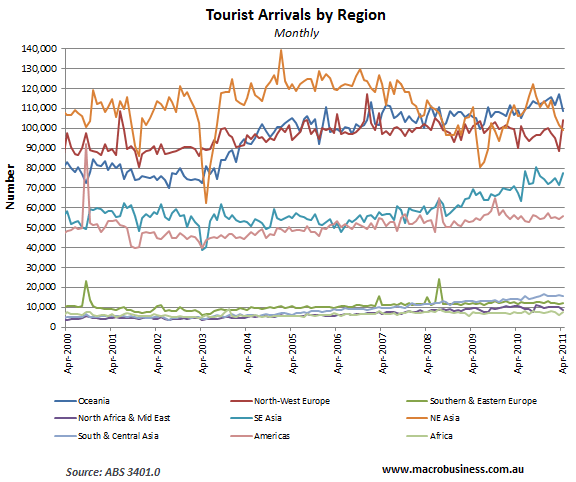
What it means:
With so many Australians choosing to holiday abroad instead of domestically, and the high currency discouraging foreigners from visiting Australia, Australia’s tourism industry is being hit hard. And the loss of tourism spending is extending to Australia’s retail sector, which is also suffering from increasing levels of online purchases from overseas websites.
As reported by Fairfax’s Tim Colebatch on Saturday:
Unreported bureau figures this week suggest that even before the April surge [of Australians holidaying abroad], more than a fifth of the growth in consumer spending in the March quarter was spent overseas by Australian tourists.
While the national accounts showed household spending up 3.4 per cent in the year to March, the detailed figures suggest the growth in household spending within Australia was only 2.8 per cent.
In the March quarter, consumer spending locally grew only 0.46 per cent. Yet in a year, net consumer spending overseas almost doubled, rising in real terms from $1.05 billion to $2 billion.
These figures exclude online purchasing from overseas websites, so actual growth in local spending was even lower.
The shift of consumer spending overseas is accelerating.
In a similar vein, recent research by Goldman Sachs estimates that the retail/tourism sectors are losing around $800 million in sales per month as a result of the current tourism deficit. This $800 million in lost sales is calculated by deducting Australian tourism spending offshore from international tourism spending in Australia.
With the Australian retail sector already facing significant headwinds from household disleveraging, stagnant to falling asset prices and population ageing, the loss of significant tourism dollars is another unwanted headache.
And with the Australian Treasury Secretary, Dr Martin Parkinson, predicting that the Australian dollar will remain at persistently high levels for some time as it tracks high commodity prices and the country’s strong terms of trade, the pain caused by the tourism deficit is likely to be ongoing.
Cheers Leith

